Aftermath of the Map
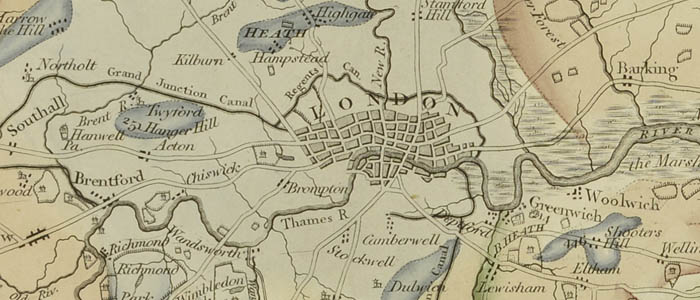
|
| London as shown on Smith's 1815 Map |
Irregular income, combined with costly publications and poor business sense meant that William Smith suffered from financial problems throughout his life. Despite there being 410 subscribers to Smith’s geological Map, it is unclear if all these individuals listed in the accompanying explanatory Memoir actually received a copy. Certainly it is thought that only around 400 copies were produced in total, of which around 150 survive to this day. George Bellas Greenough’s Map may have been more accurate and up to date (plus slightly cheaper and smaller) but it sold even less – only around 300 copies.
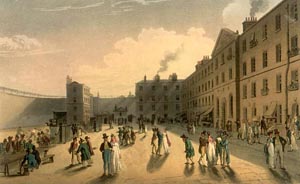
|
| King's Bench Prison, c.1809 |
In 1815, the same year as his greatest achievement, an investment in a quarrying enterprise near Bath failed and led to Smith having to sell his precious collection of fossils to the British Museum. Part of the fee he received was to cover the cataloguing and arrangement of the collection and Smith took the opportunity to produce another two (as it turned out incomplete) publications which further expanded on his theories, ‘Strata Identified by Organized Fossils, containing prints on colored paper of the most characteristic specimens in each stratum’ (1816-1819) and ‘Stratigraphical System of Organized Fossils, with reference to the specimens of the original geological collection in the British Museum: explaining their state of preservation and their use in identifying the British strata’ (1817). Between 1817 and 1819 he issued a series of six geological cross sections of England and Wales which like the above were also to be used in conjunction with the 1815 geological Map, but none of these publications improved Smith’s perilous financial situation and he spent 10 weeks in the summer of 1819 in the King’s Bench Prison for debt.
Smith’s last major publication series was his ‘New Geological Atlas of England and Wales’, which comprised county maps which were coloured geologically. The series was issued in six parts between 1819-1824 but only 21 county maps were published covering part of England, thus becoming another of Smith’s unfinished and incomplete works. By the autumn of 1819, with his house in London repossessed to pay off his debts, Smith finally left the city for the North.
|
| |

|
‘Strata Identified by Organized Fossils...', 1816-1819 |
| |
|
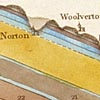
|
Geological sections, 1817-1819 |
| |
|
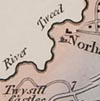
|
‘New Geological Atlas of England and Wales’, 1819-1824 |
| |
|
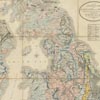
|
Reduced map of England & Wales, 1827 |
|
<<Main page
Next section: Final years>>